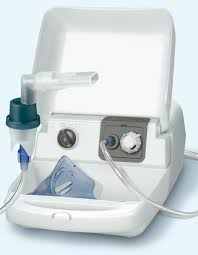

MedFriendly®


Atomizer & Atomization
Atomization (sometimes spelled atomisation) means to reduce to
tiny particles or to produce a spray by reducing a fluid to small
droplets. In the field of medicine, an atomizer is a device that
reduces liquid medications to small particles in the form of a fine
mist/spray. Atomizers allow medications to be delivered to the body
through the lungs, nose, and throat. An example is a nebulizer, which
is a device that administers medication to the lungs in mist form via
inhalation through the mouth (and sometimes the nose).
FEATURED BOOK: Inhaler Devices: Fundamentals, Design, & Drug Delivery
Nebulizers are used in conditions such as asthma and chronic obstructive pulmonary
disease (COPD). COPD is a general term for diseases characterized by long-term or
permanent narrowing of small airways connected to the lungs. Another form of an
atomizer is a nasal spray, in which a liquid (medicated or unmedicated) is sprayed in mist
form through the nostrils to improve symptoms of allergies, sinus inflammation, or dry
nasal passages. Atomizers can also be used to spray medication onto the throat in mist
form to relieve pain.
Atomizers can be used to produce perfumes or disinfectants (substances that kill certain
organisms that cause infections). Disinfectants are used in homes and medical settings
to keep the environment clean and sterile. Atomizers contain a liquid in a squeezable
bottle attached to a tube and nozzle. When air is forced through the nozzle (either by
squeezing the bottle or pushing down the top of the nozzle) the liquid is pulled up through
the tube, into the nozzle, and through a screen which turns it into a misty spray.
Atomization and atomizer come from the Greek word "atomos" meaning "indivisible."
"Where Medical Information is Easy to Understand"™

A nebulizer.














